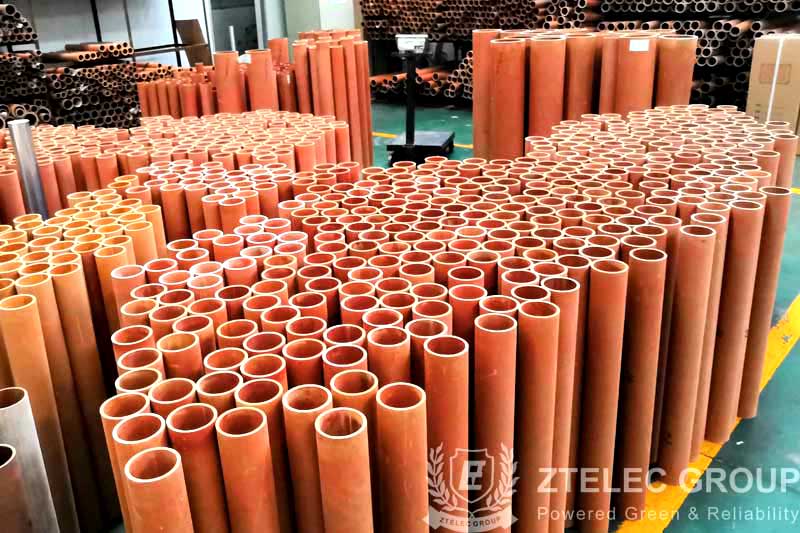Insulating material is a material that is used frequently in the industrial field. Next, let's introduce the classification and development of insulating materials.
The insulating material is a material composed of substances with a resistivity of 109 to 1022 Ω/Cm. In electrical engineering, it is called insulating material or dielectric. Simply put, it is a material that isolates charged objects from other parts. Insulating materials have a very large resistance to DC current. Under the action of DC voltage, in addition to a very small surface leakage current, it is actually almost non-conductive. For AC current, there is a capacitive current passing through, but it is also considered not. Conductive. The greater the resistivity of the insulating material, the better the insulation performance.

A material used to isolate conductive parts of different potentials. Its electrical conductivity is about 10-10 West/meter or less. In different electrical products, according to needs, insulating materials often play the roles of energy storage, heat dissipation, cooling, arc extinguishing, moisture proof, mildew proof, corrosion proof, radiation proof, mechanical support and fixation, and conductor protection.
Classification and performance There are many types of insulating materials, which can be divided into three categories: gas, liquid, and solid. Commonly used gas insulating materials include air, nitrogen, and sulfur hexafluoride. Liquid insulating materials mainly include mineral insulating oil and synthetic insulating oil (silicone oil, dodecylbenzene, polyisobutylene, isopropyl biphenyl, diaryl ethane, etc.). Solid insulating materials can be divided into organic and inorganic categories. Organic solid insulating materials include insulating paint, insulating glue, insulating paper, insulating fiber products, plastics, rubber, varnished cloth paint tubes and insulating impregnated fiber products, electrical films, composite products and adhesive tapes, and electrical laminates. Inorganic solid insulating materials mainly include mica, glass, ceramics and their products. In contrast, the variety of solid insulating materials is the most important.
Different electrical equipment has different requirements for the performance of insulating materials. Insulating materials used in high-voltage electrical equipment such as high-voltage motors and high-voltage cables are required to have high breakdown strength and low dielectric loss. Low-voltage electrical appliances use mechanical strength, elongation at break, and heat resistance as their main requirements.
The macroscopic properties of insulating materials such as electrical properties, thermal properties, mechanical properties, chemical resistance, climate change resistance, and corrosion resistance are closely related to its chemical composition and molecular structure. Inorganic solid insulating materials are mainly composed of silicon, boron and a variety of metal oxides, with ionic structure as the main feature. The main feature is high heat resistance. The working temperature is generally greater than 180 ℃, good stability, atmospheric aging resistance, and Good chemical properties and long-term aging performance under the action of electric field; but high brittleness, low impact resistance, high pressure resistance and low tensile strength; poor workmanship. Organic materials are generally polymers with an average molecular weight between 104 and 106, and their heat resistance is generally lower than that of inorganic materials. The heat resistance of materials containing aromatic rings, heterocycles and elements such as silicon, titanium, and fluorine is higher than that of general linear polymer materials.
The important factors affecting the dielectric properties of insulating materials are the strength of molecular polarity and the content of polar components. The dielectric constant and dielectric loss of polar materials are higher than that of non-polar materials, and it is easy to adsorb impurity ions to increase conductivity and reduce its dielectric properties. Therefore, attention should be paid to cleaning during the manufacturing process of insulating materials to prevent pollution. Capacitor dielectrics require a high dielectric constant to improve their specific characteristics.
If you are attractive to our products, please send us a message and we will contact you as soon as we receive it. Email: info@ztelecgroup.com Whatsapp: +8615716749170